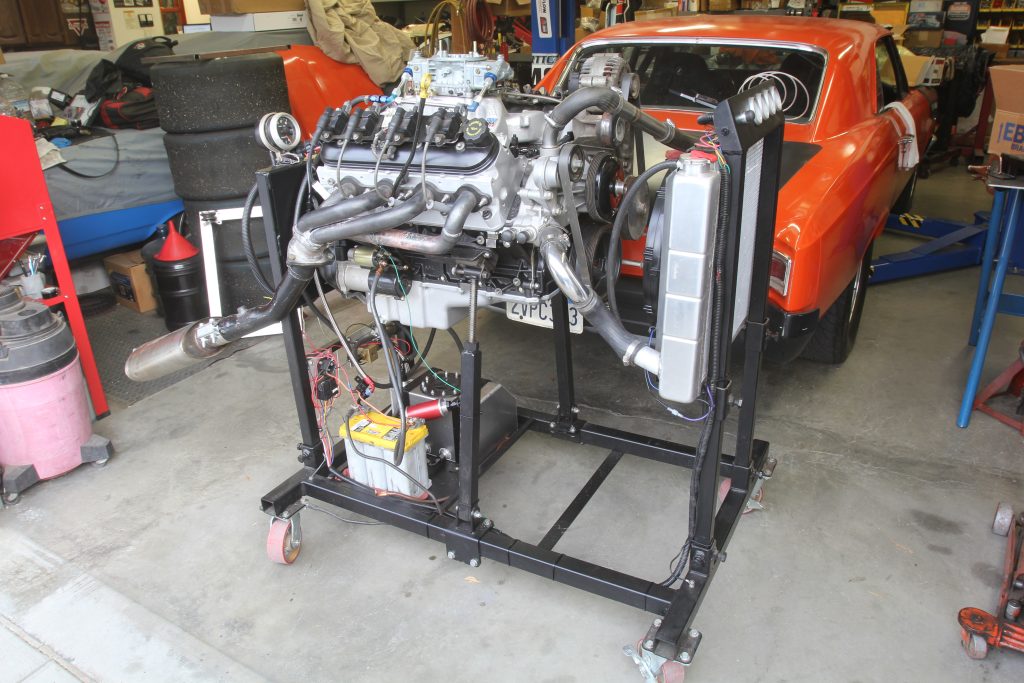I have a 2003 Chevy Avalanche 5.3 LS. I want to know if I bore my 5.3L 0.030″ over could I use the same connecting rod on the new pistons? What pistons should I use, flat top or dished? I have a small cam 205/217 degrees duration with 0.500/0.500 inch lift with an LSA of 112 degrees. I also have stock heads with new valve springs. I want to know if I should use dished pistons and will I have the right piston to valve clearance?
B.W.
You can certainly bore these iron 5.3L blocks 0.030 inch with no problem in terms of cylinder wall thickness. We’ll get to your question about pistons in a moment but let us plant a seed for even more displacement that won’t cost very much more and will certainly add power at the same time.
The 5.3L, 5.7L, 6.0L, and even 6.2L engines all use the same stroke of 3.62 inches. The stock bore on 5.3L LS engines is 3.780 inches. The stock 5.3L piston is fitted with an 8cc dish to decrease the compression on these truck engines down to roughly 9.5:1.
You can certainly keep the compression down and run the engine forever on 87 octane fuel. But what fun is that?
The Case for Flat Top Pistons
A more entertaining option is a Speed-Pro hypereutectic replacement piston that is 0.030 inch oversize but comes with a pure flat top which will raise the compression to roughly 10.4:1. This is still well within the range of pump gas octane and you might be able to get away with 87 octane fuel with a splash of 91 to keep it safe from rattling. This piston from Summit Racing is also less expensive than the stock replacement 5.3L piston.
This allows you to retain your stock 5.3L heads as well as the stock rods since these are press-on wrist pin pistons. We’ve used a much longer duration cam with 0.550 inch lift on a pure flat top piston in a 5.7L LS with good piston-to-valve clearance so your smaller cam should be no problem. But you should still check the piston-to-valve clearance anyway as a precaution to ensure everything will work together well.
This flat top Speed-Pro piston is a special order unit from Summit Racing but the notification appears that it would ship within two weeks of your order so you would not have to wait very long.
Benefits of Bumping a 5.3L LS to a 5.7L
But because you are at this position, there is another option that you might consider, especially if you don’t mind investing a little more money.
The idea is to bore the block out to the 5.7L bore size of 3.898 inches. This is a substantial bore increase but it allows you to use a stock bore 5.7L replacement piston and still retain the stock connecting rods. This package will need to be rebalanced, but that is also the case even with the replacement 5.3L pistons since the bore increase will affect piston weight.

This stock 5.7L bore size would also require a larger combustion chamber head because the static compression ratio with a stock 5.3L head would be over 11.2:1 which might not play well even with 91 octane pump gas.
So the trick is to use a set of 5.7L stock cathedral port heads with a larger 65cc chamber instead of the 5.3L’s 61cc versions. We did the compression ratio check using Summit Racing’s compression ratio calculator and this package should come in around 10.2:1 which is well within the pump gas playing field.
We have built two 5.7L LS engines out of iron Gen. III 5.3L truck engines and both have been very successful. The biggest issue is spending more money for the used 5.7L heads and also a touch more at the machine shop because they will have to charge you more to spend the time on the boring machine. But in terms of return on your investment, this rates pretty high as a cheap way to make more power.
On the Trick Flow Specialties dyno test, our stock-headed 5.7L motor, with a Summit Racing 218/227 cam (Summit PN SUM-8701R1), made 430 hp at 6,000 rpm. That’s pretty good for stock heads, 10:1 compression, a carbureted dual plane intake, and simple headers. The same combination with a 5.3L motor would be roughly down around 20 hp, putting it close to 400 to 410 hp.
So we’ve probably just made your decision a little more difficult because we’ve added several choices. But in the long run it’s all about making the right choice up front. It’s a bummer when you discover there were other options only after you’ve built the engine!
LS Piston Choice Parts List
- Speed-Pro replacement dished 5.3L piston – SLP-856CP50MM
- Speed-Pro flat top 5.3L piston, 3.80 inch bore – SLP-H855CP-50MM
- Speed-Pro 5.7L replacement piston, 3.898 inch bore – SLP-H868CP


What would my 6.0 stock bore 4.0 with 862 stock heads do with flat top pistons headers compression range on 91 octane
And I’m going with a stage 2 truck cam
Good